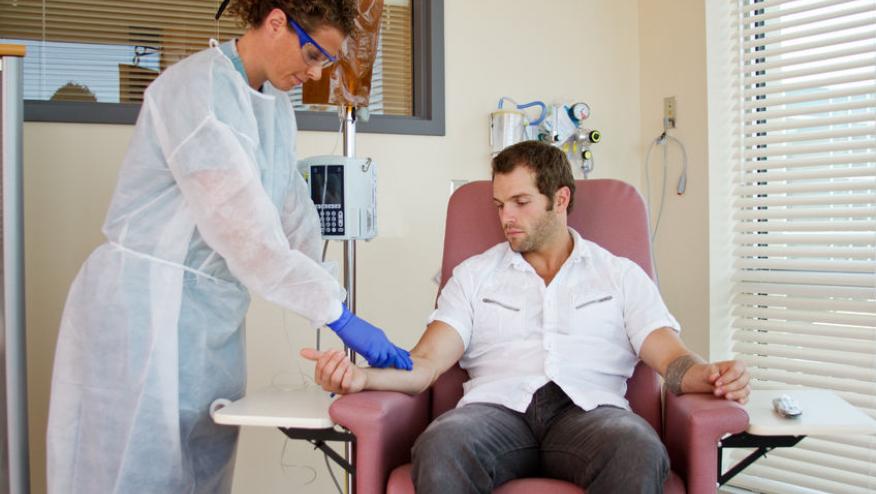Best of 2020: Infusions in the Time of Coronavirus Save

Editor's note: This article originally appeared March 20, 2020, and is being shared again as part of our "Best of 2020" coverage.
As they say, necessity is the mother of invention. After years of bemoaning the challenges of telemedicine, our rheumatology clinic transition entirely to a remote clinic in the space of a week. One of the few good things to come out of this crisis is that we may learn that in-person visits are not as critical as we thought, which may in turn help our specialty’s access issues.
The only thing we can’t do remotely, however, are infusions.
Searching for ways to do this as safely as possible has led to a number of challenges, and a number of creative solutions. Our infusion clinic handles infusions for all non-oncologic indications in the institution, so we manage patients for endocrinology, nephrology, pulmonary, and GI. We have 8 infusion chairs in our clinic, and they are typically filled 9 hours a day, 5 days a week.
The first thing we realized, in this new age of social distancing, was that they are much too close together. With some creative restructuring of the room layout, we were able to reduce to 6 chairs with sufficient distance between them. Problem solved; except that we had just managed to reduce our capacity by 25%.
We next looked at options for reducing our infusion load.
First step was to postpone all non-critical infusions. Reclast infusions were cancelled (although we’re still trying to figure out what to do with endocrine patients coming off Prolia). Iron infusions were postponed. Those were the easy ones.
The harder ones where the patients on biologics, who needed their treatment. Could we cut those down? I guess we’re going to find out. We are continuing initial courses of Rituxan as planned. Subsequent courses are going to get a single dose, even if they were previously getting two. Rituxan has become one of our highest volume infusions, so this will help. Remicade is going to be infusion in 90 minutes, not 2+ hours. Next, we tackled the shorter infusions. Stable patients on Actemra, Orencia, or Benlysta will be shifting to 6 week intervals, rather than 4. Their physicians get to object, but they need to have a damn good reason.
Now that we’d cut the infusion numbers to the bare minimum, we had to deal with logistical issues. We sent all of our physicians home to do their telehealth visits from the comfort of their recliners, but we need a physician on site whenever the infusion center is open. We’ve set up a rotation, but I can already see that COVID-19 exposures or, worse, infections are likely to thin our ranks, so we’re going to have to do some juggling.
And, for the physicians who are covering, another set of challenges: What to do with the patient who presents with a temp of 99.4? Is that a fever? Another patient clears her throat and the entire room looks at her with daggers in their eyes. We live in Chicago, so snowbirds are a thing. We have a patient flying in from Florida and planning to come right in for her infusion. Nope; not on my watch. Maintaining availability of PPE’s is going to be the next challenge.
One final thought. Our infusion population is heavily Medicare, they have immune-mediated diseases, and they are being treated with immunomodulatory therapy. They are the very definition of high risk. All of this makes me wish we could send more of them home on self-administered biologics. Unfortunately, for many, their coverage for those is lousy, which is why they are getting infusion therapy in the first place. The obvious solution to this would be to persuade CMS to cover self-injectables. I can dream, can’t I?








If you are a health practitioner, you may Login/Register to comment.
Due to the nature of these comment forums, only health practitioners are allowed to comment at this time.